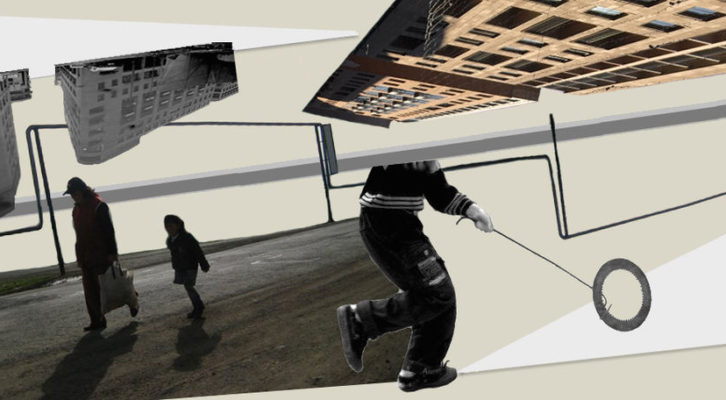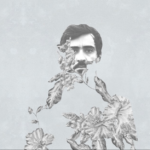Following the collapse of the Soviet Union, with the eruption of war with Azerbaijan over Nagorno-Karabakh and the trade blockade imposed by Turkey, Armenia’s economy collapsed leading to hyperinflation, and a budget deficit that peaked at 55 percent of GDP in 1993. As the government launched an ambitious IMF-sponsored economic program, its economy started to recover and scored positive growth rates. However, the growth fueled by neo-liberal policies did not transform to sustainable development. Instead, the post-independence transition period regenerated an elite that monopolized power and resources. Armenian leadership chose the path of extractive economic and political institutions. As a result, the country faced socio-economic challenges, such as unemployment, poverty, emigration, selective abortion and depopulation of bordering villages.
All these problems widened the gap between social classes making it difficult for the poor to have upward social mobility. This article will clarify that while there have been time periods, when Armenia experienced strong economic growth and despite setbacks stemming from the global recession in 2008, this growth did not create the conditions for sustainable development.
Although Armenia was embroiled in the Karabakh War (1991-1994). the transition from the Soviet Union within the country itself was relatively peaceful compared to other neighboring countries in the Caucasus such as Georgia and Azerbaijan. This pushed the new authorities, the Armenian National Movement (ANM) led by then President Levon Ter-Petrosyan to co-opt top Soviet Armenian officials to their side. This negotiated transition facilitated the emergence of a small group of corrupt officials, encouraged by ANM’s capitalist economic approach to privatize economic institutions, thus monopolizing these institutions under their control. Successive presidents continued Ter-Petrosyan’s legacy and further consolidated power and centralized the state apparatus. These changes allowed them to direct the nomination of judges, top police commanders, prosecutors, and the head of the country’s “anti-corruption agency.” Both presidents, Robert Kocharyan and later Serzh Sargsyan have thereby been able to monitor members of the state apparatus and business elite.
In his book “The Age of Sustainable Development,” economist Jeffrey Sachs explains the central concept of sustainable development that recommends a holistic framework, in which society aims for environmentally sustainable and socially inclusive development, underpinned by good governance. According to Sachs, sustainable development aims for a world without poverty, a protected environment, cohesion and economic progress.To achieve economic prosperity, social cohesion and environmental sustainability, a fourth objective must be added for sustainable development, which is good governance. For Sachs, corrupt governments that allocate their revenues for a very small group generate income inequality and widen the gap between different social classes. But if governments use revenues to ensure health care and promote equal access to education, then these gaps will narrow and the middle class will grow. Sachs, argues that good governance is important because the role of the government in economic development is crucial.
Daron Acemoglu and James Robinson in their book “Why Nations Fail,” discuss the factors behind the failure of a nation. They argue that one must not look only to a country’s economic institutions but also the political ones. Like Sachs, they believe that the role of the government is a determinant force in addressing the social and economic needs of the people. For them it is the political institution (inclusive or extractive) that determines how economic process works. That is, the type of state determines whether citizens are able to control their politicians, influences their decision-making and behavior. Acemoglu and Robinson argue that some nations are not successful because economic institutions are concentrated in the hands of a few where they extract resources from the rest of society. Thus, extractive economic institutions enrich the elite by concentrating all resources in their hands and consolidating their power often at the expense of the poor class. They are designed to extract incomes and wealth from one class of a society for the benefit of another.
For Acemoglu and Robinson, “nations fail when they have extractive economic institutions supported by extractive political institutions that hinder economic growth in the long run.” According to the authors, only political institutions that distribute power between different classes of society, encourage broader participation. Such institutions prevent one group from dominating others and manipulating resources at the expense of others. Hence, there are strong connections between pluralism and inclusive economic systems.
But why does the ruling elite choose extractive political and economic systems? Economist Joseph Shumpeter explicates that economic growth and technological advancement are accompanied by “creative destruction.” That is replacing the old system with a new one. This is why the dominant class, during transition periods, would oppose any major structural reform that may endanger its position. The opposing force, the ruling class, being afraid of “creative destruction” will block any reform process that threatens its interest and will never compromise their power to other groups unless challenged.
How are these cases related to Armenia? According to Christoph Stefes, although Armenia’s centralized system of corruption had shown higher economic growth compared to neighboring countries, its susceptibility towards authoritarianism has grown. He conceptualizes systematic corruption as being both endemic and institutionalized. That is from the bottom to the top of the state apparatus, officials regularly engage in corruption, and citizens are well aware that bribes are crucial for receiving extra favors such as court rulings in their favor or facilitating the issuing of business licenses. Thus the rules of the game are usually known in advance and are encouraged from both sides. This encourages junior public officials to build networks within the state apparatus, their main aim being to facilitate the exchange of corruption. Thus, an informal hierarchy of clientelism overlaps with the official state hierarchy.
Networks are also built between businessmen and officials to support each others’ interests. As the ruling Republican Party started to consolidate power in state institutions (both executive and legislative), it presented itself as an intermediary between the government and the business elite. Most Armenian oligarchs, are not only members of parliament but also members of the ruling elite. Where increasingly clan-based rule prevents the strengthening of democratic institutions or the rule of law thereby averting the development of inclusive economic institutions.
The Myth of Economic Growth
While Armenia’s centralized system of corruption has done little to strengthen formal institutions, the country’s economy keeps growing. Since 2000, Armenia has been considered one of the most rapidly developing economies. In general, before the global financial crisis that hit Armenia in 2008, the pace of pre-2008 economic growth in Armenia on average is much higher than in developing and, especially, developed countries. But the country continued facing socio-economic problems. Even though Armenia developed its own sustainable development plan, “Armenia Development Strategy for 2014-2015,” the government is hardly trying to fulfill the objectives of that plan. According to a report published by “Policy Forum Armenia” (2013) the state is structured in a way to serve the interest of the entrenched elite and not the country as whole. The report asks “How much would Armenia’s growth rate and aggregate income have been, if the country had lower levels of corruption and better governance, holding other factors unchanged?” The report takes the year 2013 as a case study and finds that if corruption was reduced the GDP of Armenia would have been $16.4 billion in 2013 instead of $10.5 billion, that is 55 percent higher than the original record. This is called “forgone growth.”
Why has Sustainable Development Not Been Achieved?
On October 19, 2013, the Armenian Economic Union organized an annual conference at Yerevan State University where Daron Acemoglu joined the conference via Skype. Acemoglu said that while he is not an expert in Armenian issues, he believed Armenia’s economic problem lies in government policies that are not responsive to the needs of the people. For him the problem is not about geopolitics (that is Armenia being landlocked) but pure politics. During a speech at MIT in 2016, President Serzh Sargsyan promised to apply Acemoglu’s theories, but this has been far from the reality.
Many factors prevented Armenia from achieving social cohesion. First, the public has little leverage over legislative processes or political decision making; consequently, trust in governing institutions is very low. Second, there have been reports about voter intimidation, use of administrative resources during electoral campaigns, bribe-taking by voters, and other forms of electoral violations. All these factors are pushing people to find alternatives outside the country.
Equally, Armenia is suffering high unemployment rates exceeding 17 percent (with job searches lasting 20 months, on average). Skilled laborers are emigrating due to unemployment or low salaries. Most of Armenia’s unemployed are young people between the ages of 15-35. Some argue that the situation is due to a high demand of high-skilled jobs, and there are few to fill these positions. A second reason, however, lies in the education system, which is not adapted to the demand of the market for specialized occupations. At the time Armenia gained its independence in 1991, the population stood at four million. Today it is below three million and its bordering villages nearly empty. Due to income inequality, high unemployment and lack of government responsiveness, Armenia is suffering from a ‘brain drain.’ Among such emigrants are high-skilled scientists, doctors, businesspeople, and engineers. Taxes paid by each of these professionals could have kept several families in villages.
Sachs argues that traditional societies in many cases have developed strong cultural and legal barriers when it comes to gender equality and participation of women, the poor, and ethnic groups in decision making. Due to the militarization of Armenian society and because of the ongoing war with Azerbaijan, masculinity has been prioritized and feminism viewed as something alien to Armenian culture. Modern Armenian nationalism has reshaped masculinity in a form that has made it aggressive. As a result certain stereotypes have been created which justified violence against women and the LGBT community. In 2013, the United Nations Population Fund (UNFPA) sounded the alarm regarding selective abortion in Armenia, reporting that 114 boys were being born for every 100 girls, compared to the natural ratio of 104-106 boys for every 100 girls. “Our estimates showed that, if nothing changed, we would have 93,000 missing women by 2060,” says Garik Hayrapetyan, head of UNFPA’s Armenia branch. Although Armenia enforced strict laws prohibiting selective abortion but concerns are being raised regarding its implementation.
Although, Armenia has ratified many international conventions and its Constitution explicitly addresses issues such as climate change, desertification, and the preservation of natural heritage, the government has done little to improve the environment. The country is facing problems such as deforestation, illegal mining, and air and water pollution. According to a recent survey, 88 percent of the citizens polled believed that their country’s environment is endangered. Exploitation of natural resources takes place in illegal ways and without justification often in ignorance and lack of accountability. All these problems are closely associated with corruption. For example corruption in the forest sector is widely believed to be associated with businesses sponsored by oligarchs who have close ties with high level government officials.
Finally, poor governance is the major obstacle for sustainable development. According to a Transparency International report there are many types of institutional corruption in Armenia that are hindering development and progress. First, politicized and ineffective judiciaries. The report claims that in the case of Armenia, the number of corruption prosecutions is very limited because many government officials are part of the corruption scandals and are protected by their immunity. Another reason for widespread corruption is the limited checks and balances on executive power. Armenia lost the opportunity during its transitional period to move towards inclusive political institution, instead the ruling elite chose the extractive institutional path. The report finds that executive bodies are unaccountable to the legislative body and citizens due to weak systems of checks and balances.
To summarize, despite Armenia experiencing limited economic growth, this growth has not translated into sustainable development. From the early days of the transition period, the Armenian political elite chose extractive political institutions and successive governments came to centralize power further. Since politics is a key determinant in shaping economic institutions, extractive economic institutions were seen as the only way to preserve the ruling class. This phenomenon resulted in widespread corruption within state institutions. The ruling elite built extractive economic institutions to enrich themselves by concentrating all resources in their hands and consolidating their power often at the expense of the poor. This system which was designed to extract incomes and wealth marginalized many people and eventually widened the income gap.
Corruption in economic institutions was a reflection of the extractive political system. The manipulation of elections, gender discrimination and marginalization of bordering villages, pushed people to lose any hope and emigrate, thus thwarting social cohesion. Moreover, corruption in the forest, mining and water sectors which are widely believed to be united with businesses associated with government officials is causing serious environmental damage. Finally, the absence of checks and balances between the executive and legislative branches further consolidated the extractive political institutions hindering good governance. Therefore, institutional corruption was the main obstacles that prevented Armenia from achieving sustainable development.
Any reform or progress to put the country on a track toward sustainable development should enforce anti-corruption programs, open the door for political pluralism and reform political institutions. Since politics is the determinant force of economic institutions, any positive change in political institutions, such as the transition towards an inclusive system, will reflect positively on Armenia’s economic institutions.
The article originally was published in EVN Report, 15/3/2018
Yeghia Tashjian is a regional analyst and researcher. He has graduated from the American University of Beirut in Public Policy and International Affairs. He pursued his BA at Haigazian University in Political Science in 2013. He founded the New Eastern Politics forum/blog in 2010. He was a Research Assistant at the Armenian Diaspora Research Center at Haigazian University. Currently, he is the Regional Officer of Women in War, a gender-based think tank. He has participated in international conferences in Frankfurt, Vienna, Uppsala, New Delhi, and Yerevan, and presented various topics from minority rights to regional security issues. His thesis topic was on China’s geopolitical and energy security interests in Iran and the Persian Gulf. He is a contributor to the various local and regional newspapers and presenter of the “Turkey Today” program in Radio Voice of Van.







